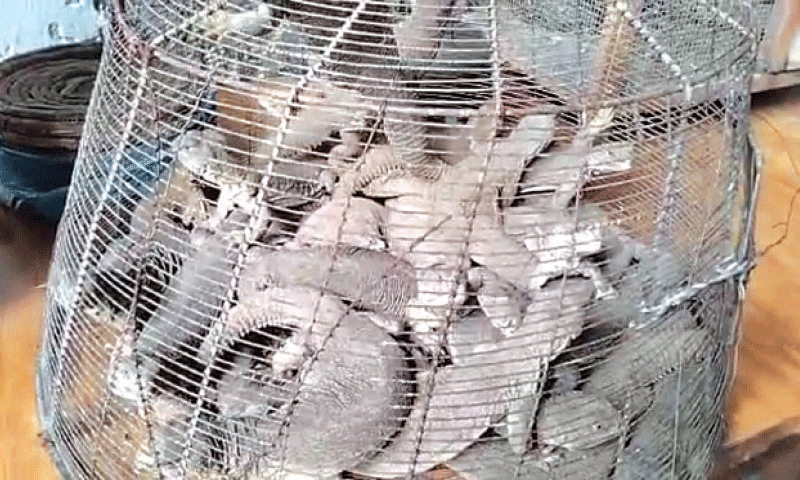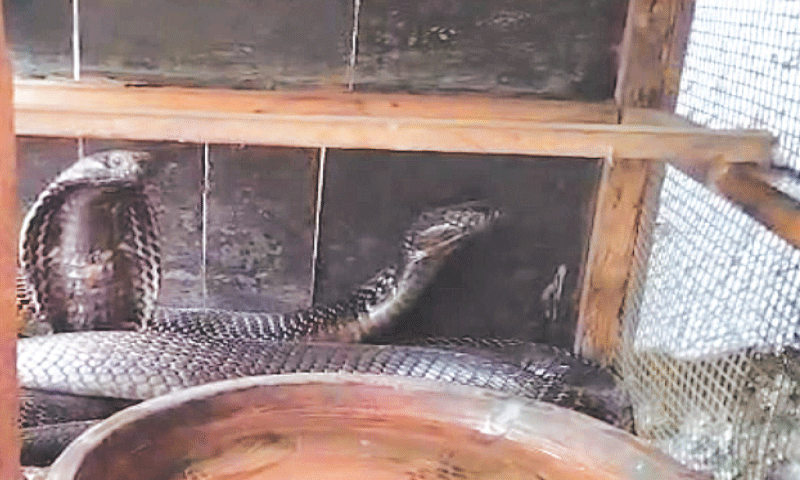KARACHI: Four snakes and seventy-five spiny-tailed lizards that were being sold in the Quaidabad region have been saved by the wildlife department.
“On Saturday morning, we released the lizards back into the Kirthar National Park, where they belong. Inspector Aijaz Noodani told Dawn that they were being sold next to a Dawakhana that was reportedly used to manufacture illegal narcotics from reptiles.
He claimed that while the issue was being investigated, a man known only as Abdul Ghaffar had been taken into custody. “The snakes—two cobras and an equal number of sand boas—will shortly be returned to their natural habitat.”
Wildlife specialists claim that reptile hotspots in the nation continue to exist in Sindh and Balochistan. Balochistan is home to many different kinds of reptiles, some of which are endemic, and has managed to avoid becoming the target of illicit trapping and poaching.

In addition to Sanghar, Shikarpur, and Nawabshah, snake hotspots in Sindh include Nagarparkar, Mithi, and Umerkot.
In addition to habitat loss and smuggling, experts noted that one of the main causes of the diminishing strength of many snake species in the province was the unrestricted operation of jogis, especially in the interior of Sindh.
The lizards’ skins and oil, which is derived from visceral fat, are hunted. As they suggest various reptile species and their parts as a treatment for various ailments, the “hakims” are also blamed for the declining number of reptiles.
According to Sindh Wildlife Conservator Javed Ahmed Mahar, “we have been taking strict action against traders involved in illicit reptile trade for about two years now and the population of spiny tailed lizards is now getting stabilised in their habits across the province.”
He made the point that these lizards contributed significantly to soil fertility in a way that fertilizers could not.
They are herbivorous, in contrast to other carnivorous lizards. They create a deep network of burrows that improve soil fertility by allowing oxygen to permeate the soil.




